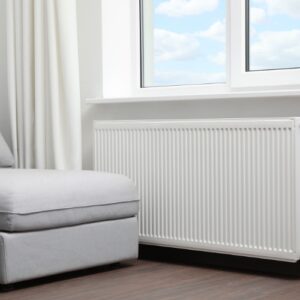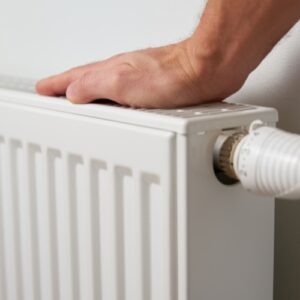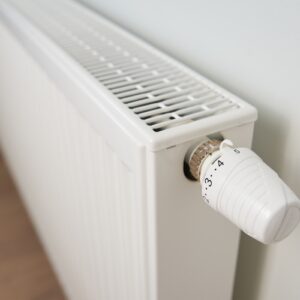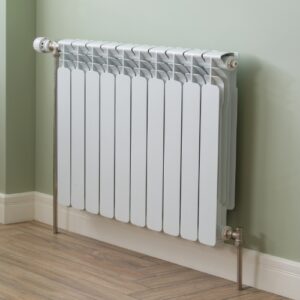10 Reasons to Love Hydronic Heating
Hydronic heating, often referred to as radiant heating, represents a sophisticated technology designed to enhance the comfort and efficiency of heating in residential and commercial settings. This system operates by circulating heated water through pipes that are meticulously laid under floors, embedded within walls, or connected to radiators and baseboard heaters. Unlike traditional forced-air systems that heat and circulate air through vents, hydronic heating warms rooms by radiating heat from the ground up or through heated panels, providing a uniform and steady warmth that can be felt directly by the occupants.
The appeal of hydronic heating lies in its ability to maintain consistent indoor temperatures and distribute heat more evenly throughout the space. This method avoids the uneven heat distribution and draftiness often associated with conventional heating systems. Moreover, because it heats objects and surfaces directly, hydronic heating can operate more efficiently, using less energy to achieve the same level of warmth, which can lead to significant savings on utility bills.
In this comprehensive guide, we will explore the inner workings of hydronic heating systems, including their main components such as boilers, pipes, and radiators. We will also discuss the various types of hydronic systems available and the principles behind their operation. Additionally, we’ll cover the benefits of choosing hydronic heating over other methods, detailing not only the efficiency and comfort advantages but also the health benefits, such as reduced allergens and dust circulation within the home.
Whether you are contemplating an upgrade to your home’s heating system, considering hydronic solutions for a new construction project, or simply curious about alternative heating methods, this detailed introduction to hydronic heating will equip you with the knowledge you need to make an informed decision. By understanding the mechanics, benefits, and considerations involved in installing and maintaining a hydronic heating system, you can better assess its suitability for your heating needs and lifestyle.
What is Hydronic Heating?
Hydronic heating, also known as radiant heating, is a heating system that utilizes heated water to warm spaces efficiently and comfortably. This method circulates hot water (or sometimes glycol) through a network of pipes that are installed beneath floor surfaces, within walls, or connected to radiators and baseboard heaters. Here’s how it works:
- Heating the Water: The system’s boiler heats water to a controlled temperature. This boiler can be powered by various energy sources, including natural gas, oil, electricity, or even renewable resources like solar energy.
- Circulating the Water: Once heated, the water is circulated through the network of pipes by a pump. This network can be installed under the floor (for underfloor heating), within wall panels, or through traditional radiators or modern baseboard heaters.
- Transferring Heat: As the hot water moves through the pipes, it radiates heat upwards and outwards, warming the floors, walls, or radiators which then passively warm the air in the room. Unlike forced air systems that blow heated air through vents, hydronic systems provide a steady, even heat that radiates directly from the heated surfaces.
- Returning Water for Reheating: After transferring its heat, the water cools down and returns to the boiler to be reheated and circulated again.
Hydronic systems are highly appreciated for their efficiency. Water is a more effective heat transfer medium than air, allowing these systems to heat spaces using less energy, which can lead to lower utility bills. They also offer enhanced comfort because the radiant heat reduces drafts and doesn’t circulate dust and allergens as forced air systems do. Additionally, hydronic heating can be zoned easily, allowing homeowners to control the temperature in different rooms independently.
Components of a Hydronic Heating System
A hydronic heating system consists of several key components that work together to provide efficient and comfortable heat distribution. Understanding each component’s role is essential for anyone considering this type of heating system. Here are the primary components involved:
- Boiler: The boiler is the heart of the hydronic heating system. It heats the water or glycol mixture that circulates through the system. Boilers can be powered by natural gas, oil, electricity, or alternative fuels like biomass and solar energy.
- Pipes: These are specially designed to withstand high temperatures and pressures. Pipes are typically made of copper, PEX (cross-linked polyethylene), or other durable materials. They form a network that carries the heated water from the boiler throughout the property to the designated heat emitters and then back to the boiler.
- Radiators/Baseboard Heaters: These are the most visible parts of a hydronic heating system. Radiators or baseboard heaters are installed in various rooms and act as heat exchangers, radiating the heat from the hot water into the room.
- Thermostatic Radiator Valves (TRVs): TRVs are installed on radiators to control the temperature in individual rooms independently, providing zone control and energy efficiency by regulating the flow of hot water through each radiator.
- Circulating Pump: This pump is crucial for moving the heated water from the boiler through the pipes and to the radiators or underfloor heating loops. It ensures that water is circulated efficiently and maintains a constant flow to keep the temperature even throughout the building.
- Expansion Tank: The expansion tank compensates for the increase in water volume due to heating and the corresponding increase in pressure. It helps maintain a constant pressure in the heating system, preventing pressure fluctuations that could damage components.
- Manifold (for underfloor heating): In systems with underfloor heating, a manifold distributes the hot water to various heating circuits throughout the floor. It allows for precise control over the flow and temperature of the water in different zones or rooms.
- Heat Exchanger (in some systems): In systems where there is a need to separate the boiler circuit from the heating circuit, a heat exchanger is used to transfer heat from the boiler water to the heating system water without mixing the two.
- Controls and Thermostat: A central thermostat or multiple thermostats (for systems with zoning capabilities) control the overall system temperature. More sophisticated systems might include programmable or smart thermostats that allow for better energy management and remote operation.
- Air Vent/Air Eliminator: This component is used to remove any air trapped in the system, ensuring efficient operation and preventing noise and corrosion, which air pockets can cause.
Each component plays a vital role in ensuring that the hydronic heating system operates smoothly, efficiently, and effectively, providing consistent and comfortable warmth throughout the property. Proper installation, regular maintenance, and timely repairs are crucial to the long-term performance and efficiency of the system.
Benefits of Hydronic Heating
Hydronic heating systems offer a range of benefits that make them a preferred choice for both residential and commercial heating. Here are the key advantages of using hydronic (radiant) heating:
- Efficiency: Hydronic heating is generally more efficient than traditional forced-air systems. Water is a more effective heat transfer medium than air, which means it can transport energy more effectively and retain heat longer. This leads to lower operational costs and reduced energy consumption, as the boiler doesn’t need to fire as frequently.
- Even Heating: One of the most noticeable benefits of hydronic heating is its ability to provide consistent and even heat distribution. Unlike forced-air systems, which can create hot and cold spots within a room, hydronic systems heat a space evenly. Radiant heat rises from the floor and distributes uniformly, warming a room from the ground up.
- Silent Operation: Hydronic systems operate very quietly, especially when compared to the noise of blowers and fans associated with forced-air systems. This makes hydronic heating an excellent option for environments where noise is a concern, such as bedrooms, libraries, and office settings.
- Improved Air Quality: Because hydronic heating does not rely on blowing air through ductwork, it doesn’t stir up dust, allergens, or particulates. This is particularly beneficial for individuals with allergies, asthma, or respiratory issues, as it contributes to a cleaner and healthier indoor environment.
- Customizable and Flexible: Hydronic systems can be zoned to allow different temperatures in different areas of a building. This zoning capability not only enhances comfort but also increases energy efficiency by only heating areas that are in use.
- Design Versatility: The equipment associated with hydronic systems (pipes, boilers, etc.) can be hidden from view, allowing for greater interior design flexibility. Radiant floor systems are completely invisible, as they are installed underneath the floor covering, and modern radiators can be sleek and stylish.
- Durability and Low Maintenance: Hydronic heating systems generally have a long lifespan and require less maintenance than other heating systems. With fewer moving parts than forced-air systems (no filters, blowers, or ductwork), fewer components can break down or require regular service.
- Compatible with Renewable Energy Sources: Hydronic systems can be easily integrated with renewable energy sources such as solar thermal panels or geothermal heating systems, further enhancing their energy efficiency and reducing dependency on fossil fuels.
- Comfortable Humidity Levels: Since hydronic heating doesn’t dry out the air as much as forced-air systems can, it helps maintain more comfortable humidity levels indoors during the heating season. This is particularly beneficial during winter when dry air can be a comfort and health concern.
- Increased Property Value: The installation of a hydronic heating system can increase the value of a property. The efficiency, comfort, and modern appeal of radiant heating are attractive features to prospective homebuyers.
These benefits make hydronic heating a compelling choice for those seeking a reliable, comfortable, and efficient heating solution. Whether for new construction or retrofitting existing properties, hydronic systems offer a sophisticated approach to heating that meets the demands of modern living.
Maintenance Requirements
Maintaining a hydronic heating system is crucial for ensuring its efficiency, longevity, and safe operation. Regular maintenance helps prevent breakdowns, improve energy efficiency, and extend the system’s lifespan. Here are the primary maintenance tasks required for hydronic heating systems:
- Annual Boiler Service: A qualified technician should inspect and service the boiler annually. This service includes checking the boiler’s operation, ensuring that it is burning fuel efficiently, inspecting the flue for blockages, and verifying that all controls and safety devices are functioning properly.
- Check and Adjust Water Pressure: The water pressure in the system should be checked regularly to ensure it remains within the manufacturer’s recommended range. Low water pressure can indicate leaks or problems with the expansion tank, while high pressure can stress the system and lead to damage.
- Inspect and Clean Components: Periodic inspection and cleaning of the boiler, burners, and heat exchanger can prevent the buildup of soot and debris, which can impair the system’s efficiency and safety. The circulating pump and other moving parts should also be checked and lubricated if necessary.
- Bleed Radiators: Air can become trapped in radiators and pipes, reducing heating efficiency. Bleeding the radiators annually or as needed helps to remove these air pockets and maintain optimal heat distribution.
- Flush the System: Over time, sludge and corrosion deposits can build up in the pipes and radiators, especially if the water quality is poor. Flushing the system helps to clear these deposits and restore heating efficiency. This task may not be needed annually but should be done according to the condition of the system and water quality.
- Check for Leaks: Regular checks for leaks in the piping, radiators, and around the boiler are important. Leaks can lead to loss of water pressure and may cause damage to the building structure or the heating system itself.
- Test Expansion Tank: The expansion tank compensates for the expansion of water as it heats up and prevents excessive pressure in the system. It should be checked for proper pressure and function during the annual service.
- Inspect and Replace Valves and Seals: Over time, valves and seals may wear out and require replacement to prevent leaks and ensure smooth operation.
- Monitor Thermostat and Controls: Regularly check that the thermostat and other controls are working correctly. Incorrect readings or malfunctioning controls can lead to inefficiency and discomfort.
- Antifreeze Concentration: If the system uses antifreeze (glycol), its concentration and condition should be checked annually. Over time, antifreeze can degrade and lose its effectiveness, requiring replacement to prevent freezing and corrosion within the system.
Comparison with Other Heating Methods
Hydronic heating systems offer unique advantages and some drawbacks when compared to other common heating methods like forced-air systems and electric baseboard heating. Here’s a detailed comparison to help you understand how hydronic heating stacks up against these alternatives:
1. Hydronic Heating vs. Forced-Air Systems
Efficiency:
- Hydronic: Generally more energy-efficient because water is a better medium for carrying heat than air. It provides consistent heat with minimal heat loss, which can translate into lower heating bills.
- Forced air: You can experience significant heat loss through ductwork, especially if the ducts pass through unheated spaces.
- Hydronic: Does not circulate air, so it does not distribute dust, allergens, or other airborne particles throughout the home. This can be a significant advantage for allergy sufferers.
- Forced-Air: Can circulate allergens and dust, which may negatively affect indoor air quality, particularly if ductwork is not regularly cleaned.
Heat Distribution:
- Hydronic: Provides even, consistent heat that radiates from the floor, walls, or radiators, minimizing cold spots.
- Forced-Air: Heat distribution can be uneven due to rapid air movement, leading to drafts and hot or cold spots.
Installation and Maintenance:
- Hydronic: More costly and complex to install, especially if retrofitting in an existing property. Maintenance is generally low but requires professional servicing.
- Forced-Air: Easier and less expensive to install in new construction and existing homes with existing ductwork. Requires more frequent filter changes and duct cleaning.
Noise:
- Hydronic: Operates silently, which enhances comfort in quiet environments.
- Forced-Air: The blower and airflow can create noise, which might be disruptive in a quiet home.
2. Hydronic Heating vs. Electric Baseboard Heating
Efficiency:
- Hydronic: More efficient in long-term operation due to the heat retention properties of water. Suitable for whole-house heating.
- Electric Baseboard: Less efficient as electricity is expensive as a heat source; typically used for supplemental heating rather than whole-house systems.
Installation:
- Hydronic: Installation can be intensive and expensive, requiring a boiler, pipes, and potentially floor modifications.
- Electric Baseboard: Easy and inexpensive to install with minimal structural impact on the home.
Aesthetic Impact:
- Hydronic: Pipes are usually hidden within walls or floors, and modern radiators can be aesthetically pleasing.
- Electric Baseboard: Heaters are visible and can take up valuable wall space, which might not blend well with home decor.
Control and Flexibility:
- Hydronic: Offers excellent control over heat distribution and can be zoned to heat-specific areas as needed.
- Electric Baseboard: Each unit is typically controlled independently, which allows for zoning but can be less efficient if not managed carefully.
Comfort:
- Hydronic: Heat is gentle and consistent, providing superior comfort, especially in colder climates.
- Electric Baseboard: This can create hot spots near the heater while leaving other areas cooler, which may not be as comfortable.
Mastering Comfort and Efficiency: Hydronic Heating and Its Role in Modern HVAC Solutions by The AC Therapist
As The AC Therapist, I am committed to providing not only top-tier air conditioning services but also comprehensive heating solutions that enhance the comfort and efficiency of your home or office. Hydronic heating represents an exemplary solution within the broader spectrum of HVAC systems, offering superior heat distribution, energy efficiency, and air quality benefits. Whether you are building a new home, upgrading an existing system, or simply seeking a more efficient way to heat your space, considering a hydronic system could be a game-changer.
Understanding the advantages and the comparison with other heating methods allows you to make an informed decision tailored to your specific needs. At The AC Therapist, we are here to help you navigate these choices, ensuring that your environment is not only comfortable but also health-friendly and energy-efficient. Embrace the benefits of modern HVAC solutions with us, and let’s create a more comfortable and sustainable world together.













